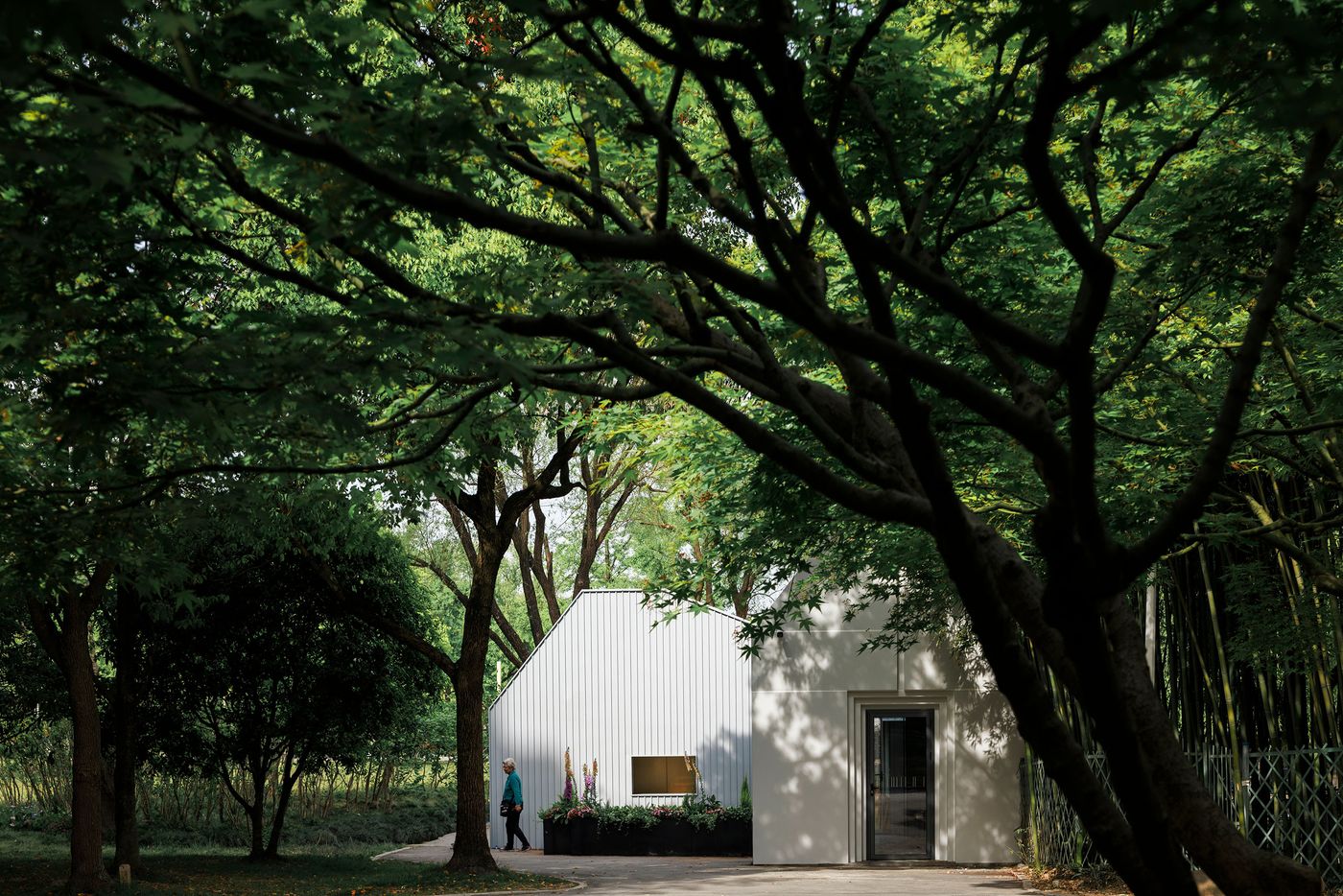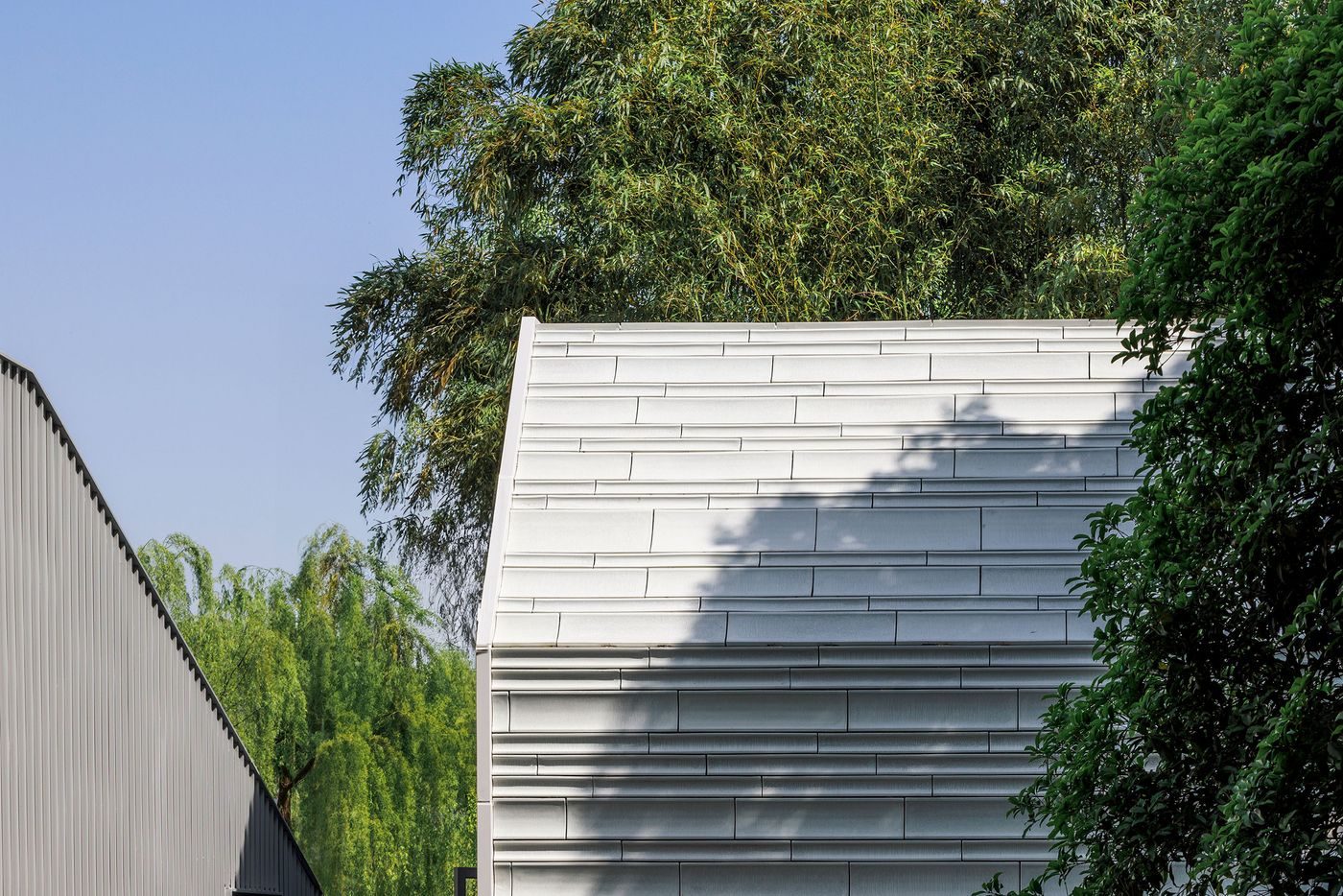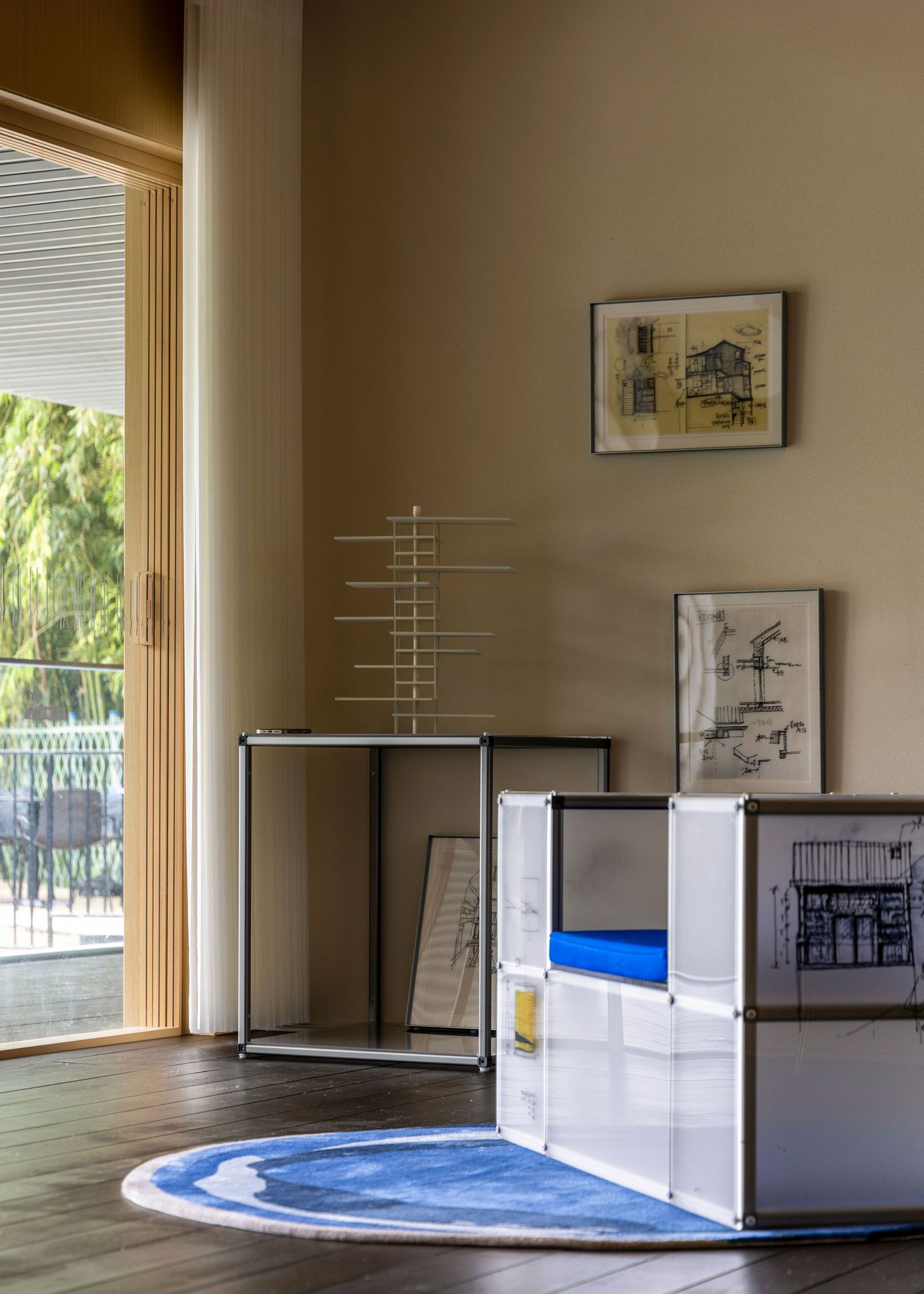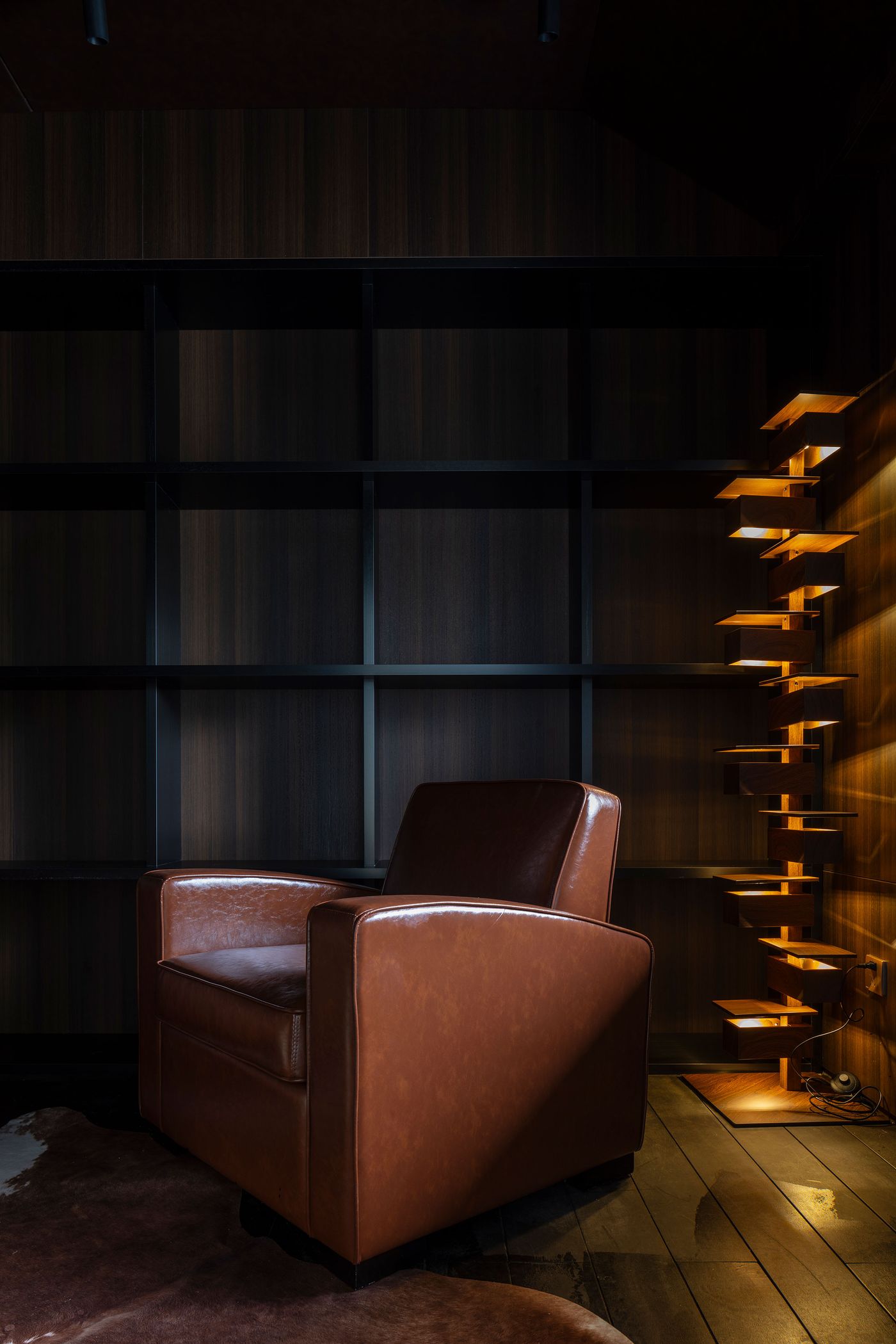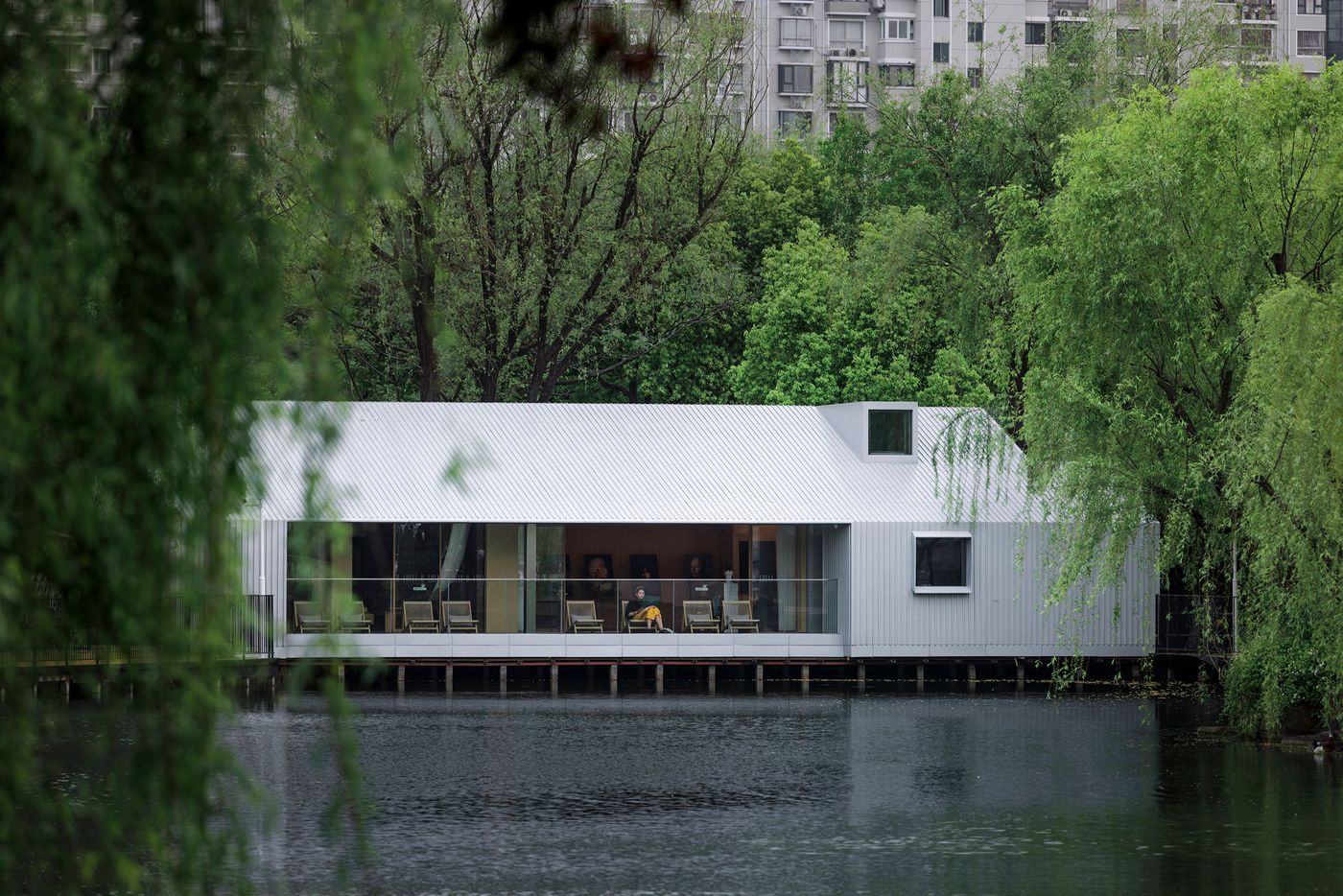
Wutopia Lab Invites a Quiet Encounter with Nature at a Lakeside Pavilion in Shanghai
Words by Yatzer
Location
Shanghai, China
Wutopia Lab Invites a Quiet Encounter with Nature at a Lakeside Pavilion in Shanghai
Words by Yatzer
Shanghai, China
Shanghai, China
Location
Amidst Shanghai’s forest of high-rises, where verticality is often synonymous with ambition, this lakeside pavilion by local architectural Wutopia Lab offers a striking gesture of serene horizontality. Nestled along the willow-fringed waters of Daning Park, a beloved public park known for its tranquil paths and springtime tulips, The Lake House was conceived as a place of quiet tranquillity between architecture and nature, where visitors can take advantage of the picturesque setting. Completed in just 45 days, while the project was shaped by tight logistical constraints, it was exactly these limitations that chief architect Yu Ting, Wutopia Lab’s founder, took advantage of in order to create something radical: a low-impact, zero-carbon pavilion that speaks less in statements than in subtleties.
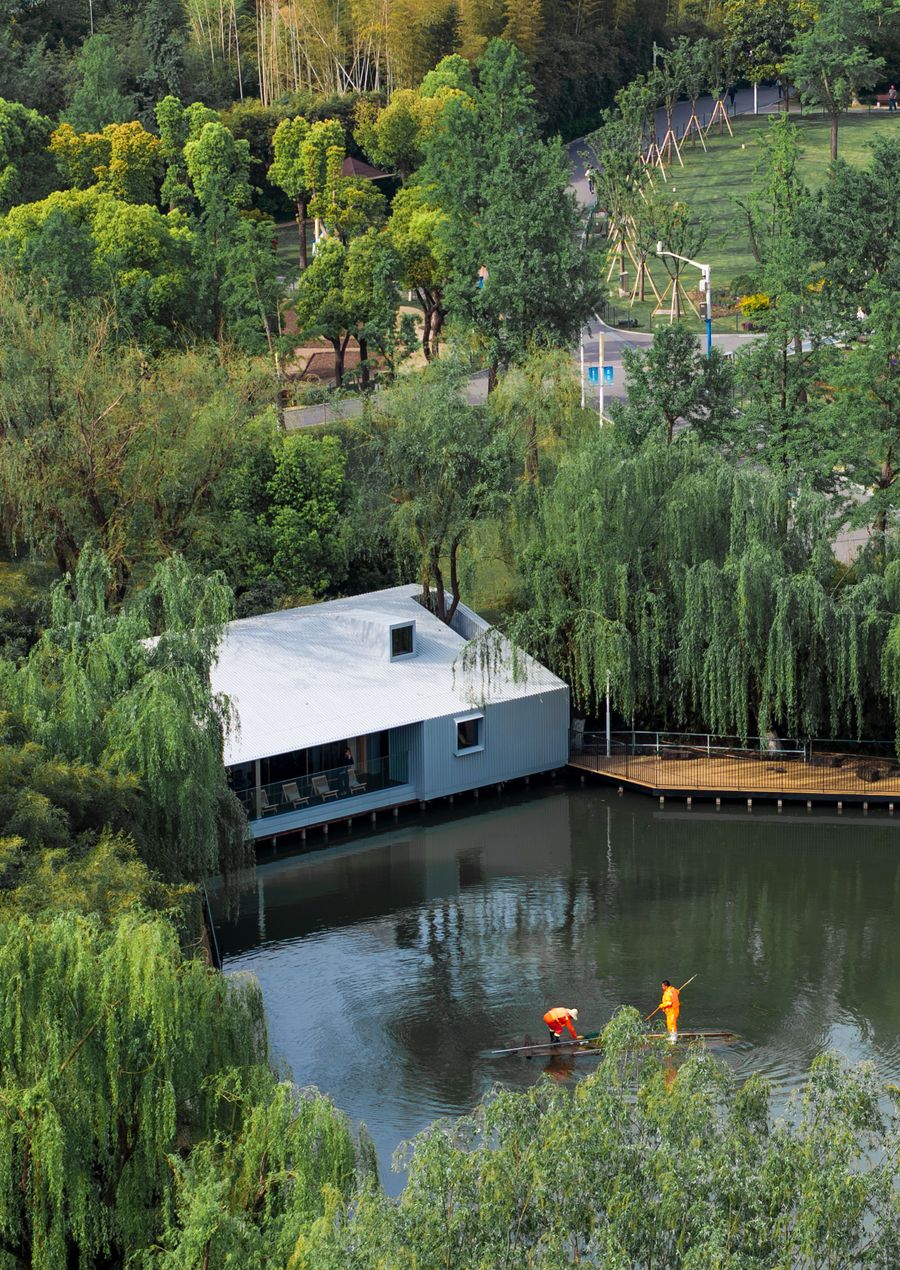
Photography by Liu Guowei.
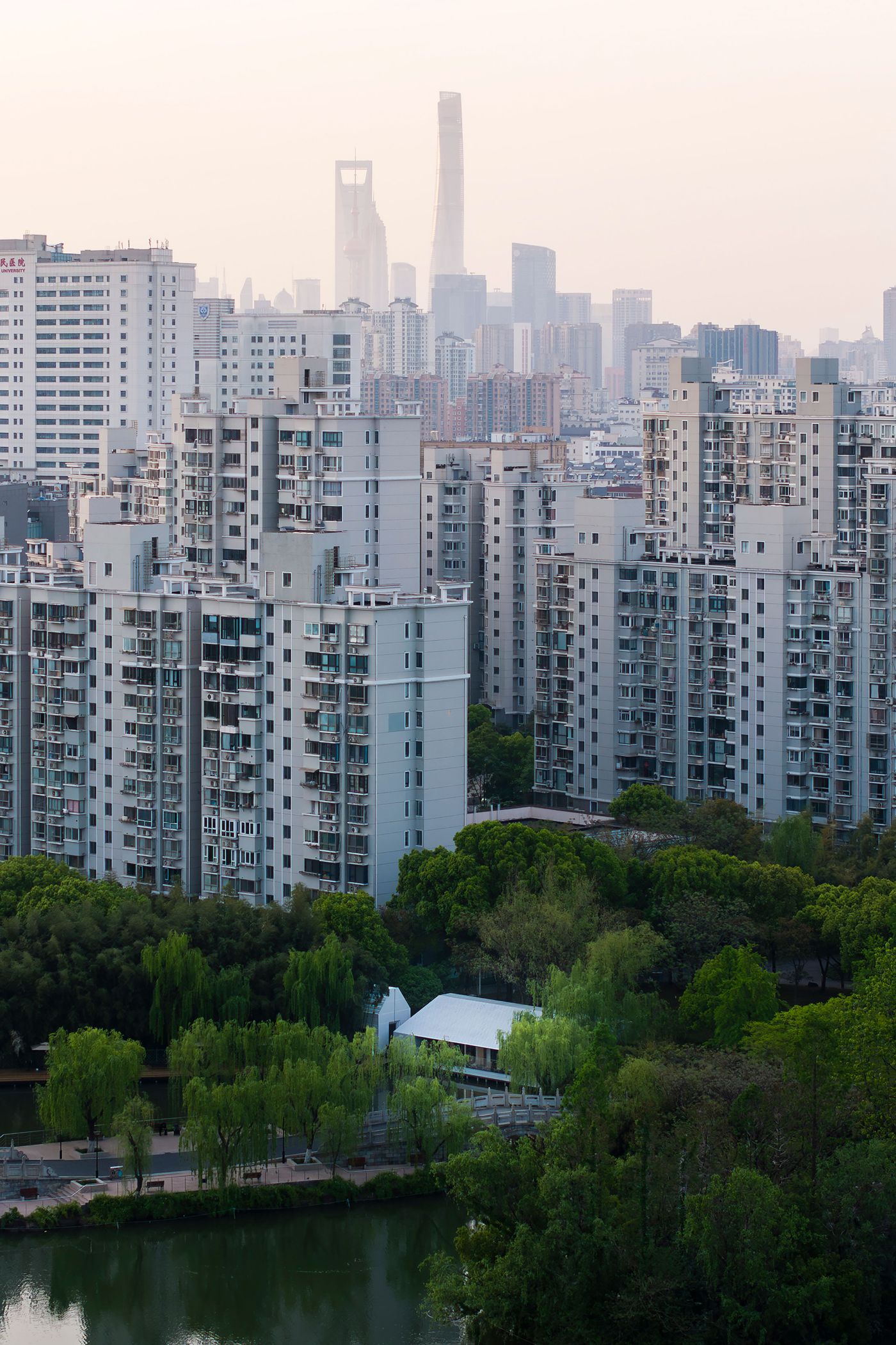
Photography by Liu Guowei.

Photography by Liu Guowei.
The brief was as much logistical as it was poetic: preserve two existing structures and the surrounding greenery, including two trees leaning against the original façades, while creating a multipurpose “Life Experience Pavilion” that could host exhibitions, events, and quiet observation. Yu responded with an integrated design strategy spanning architecture, interiors, landscape, soft furnishings, and curation, a holistic approach, he insists, essential to achieving spatial harmony as well as meeting the breakneck timeline.
To streamline construction, Yu deployed his recurring “house within a house” concept. Each building was wrapped in a new envelope: one clad in aluminium, the other in recycled ceramic tiles salvaged from past developments. These skins provided both visual clarity and functional logic, weatherproofing the interiors while harmonizing with the site. A modular construction system, standardized materials, and minimized on-site wet work allowed the team to compress the construction cycle without compromising on spatial quality. Abiding by a quiet ecological ethic, the pavilion incorporates recycled and biodegradable materials, from ceramic panels to mushroom leather, contributing to what Yu describes as a “zero-carbon narrative.”
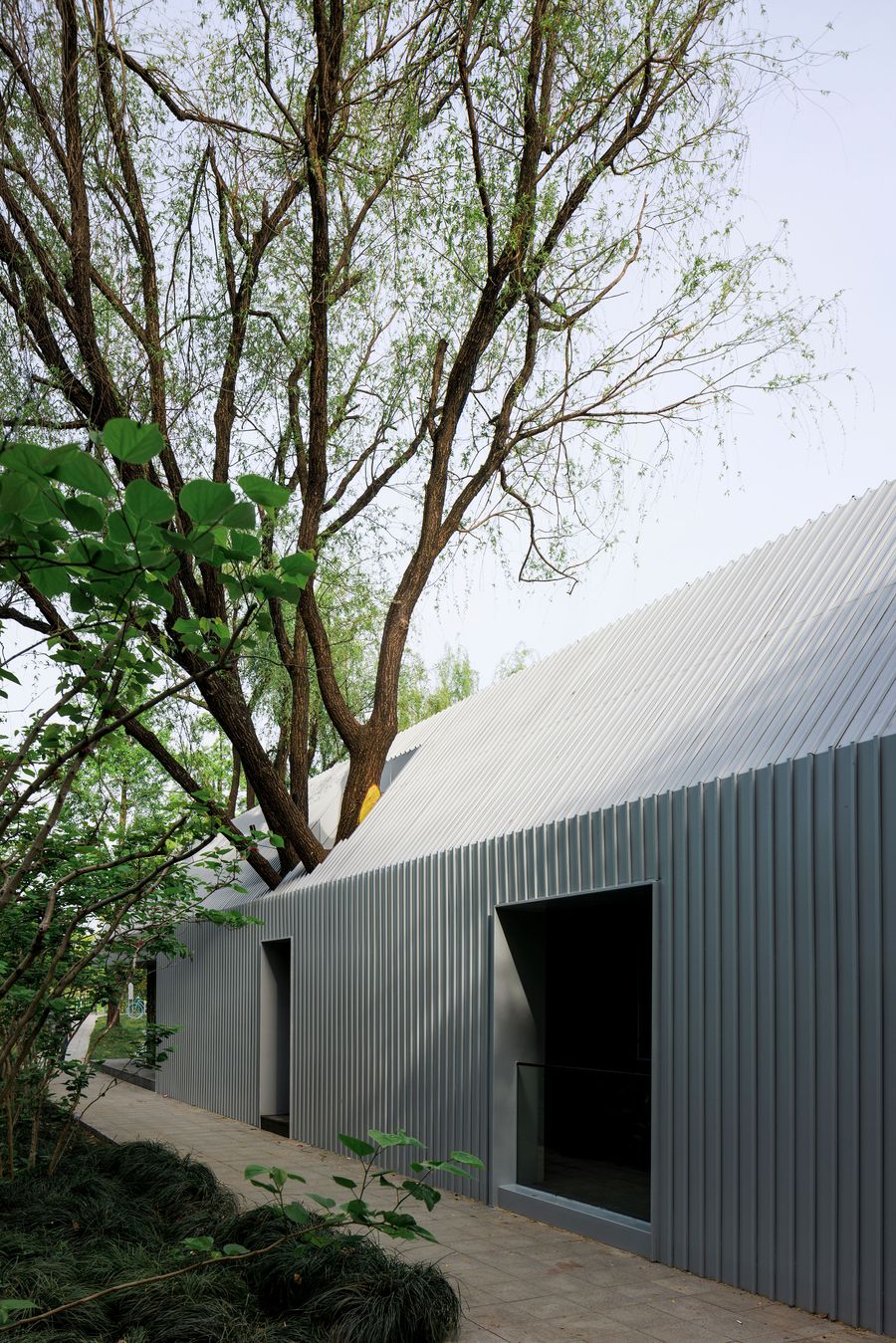
Photography by Liu Guowei.
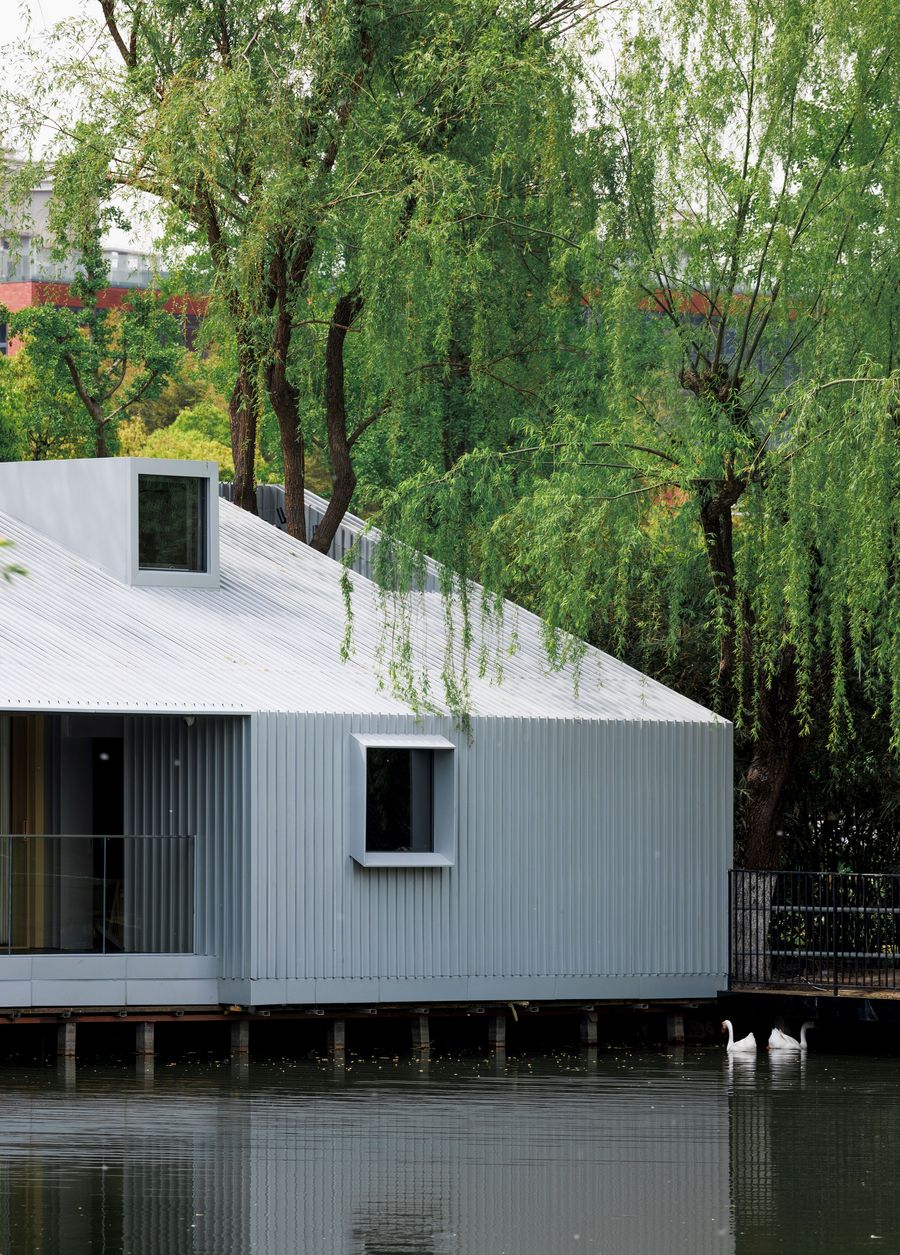
Photography by Liu Guowei.

Photography by Liu Guowei.
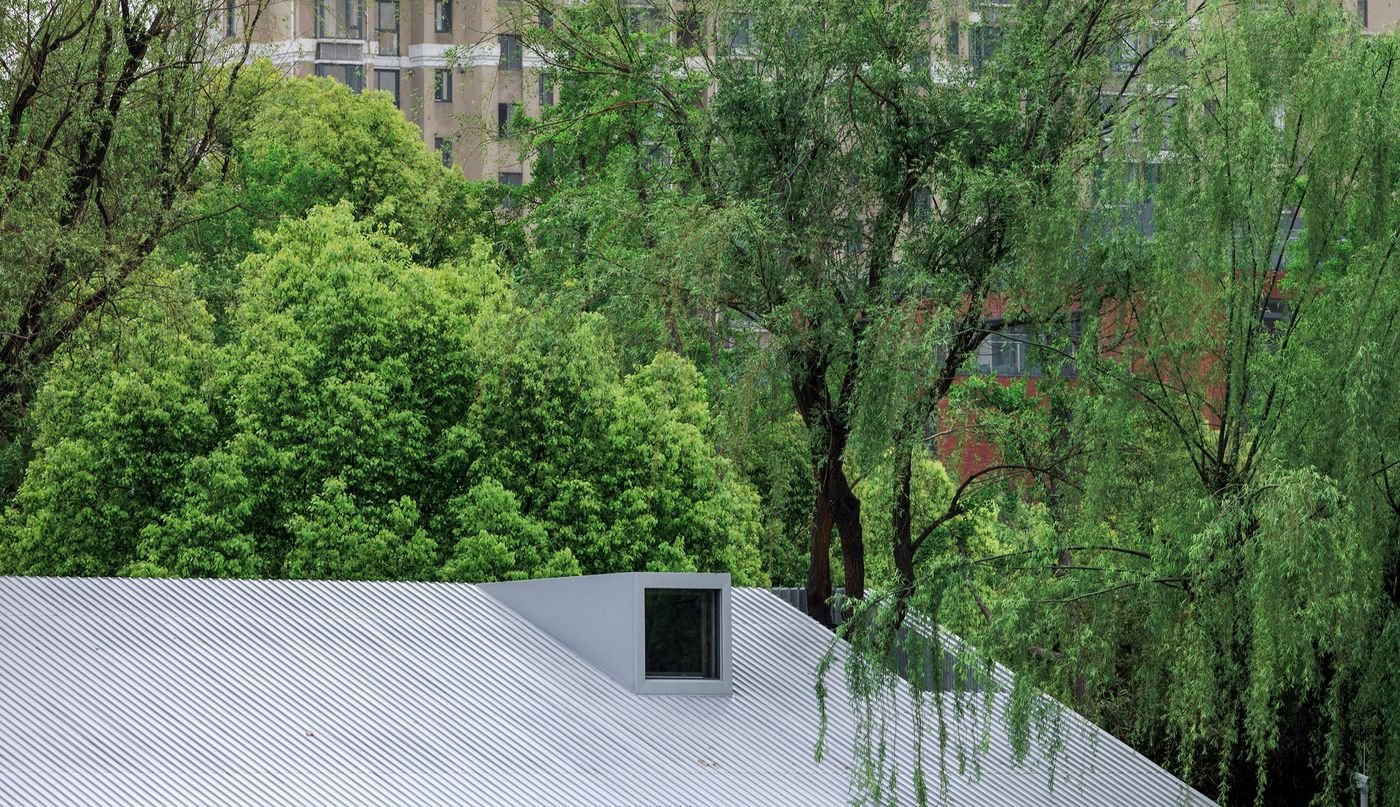
Photography by Liu Guowei.
Yet The Lake House is far more than a pragmatic exercise. Yu’s design draws inspiration from both Mies van der Rohe and Frank Lloyd Wright, whose influence can be seen in the pavilion’s open-plan interiors, continuous horizontal lines, and the deliberate dissolving of boundaries between inside and out. The main building stretches along the water’s edge with large sliding glass doors that open onto a colonnaded loggia, creating a fluid threshold between the pavilion and lake, while on its side, a smaller building houses a café with a more playful sensibility.

Photography by Liu Guowei.
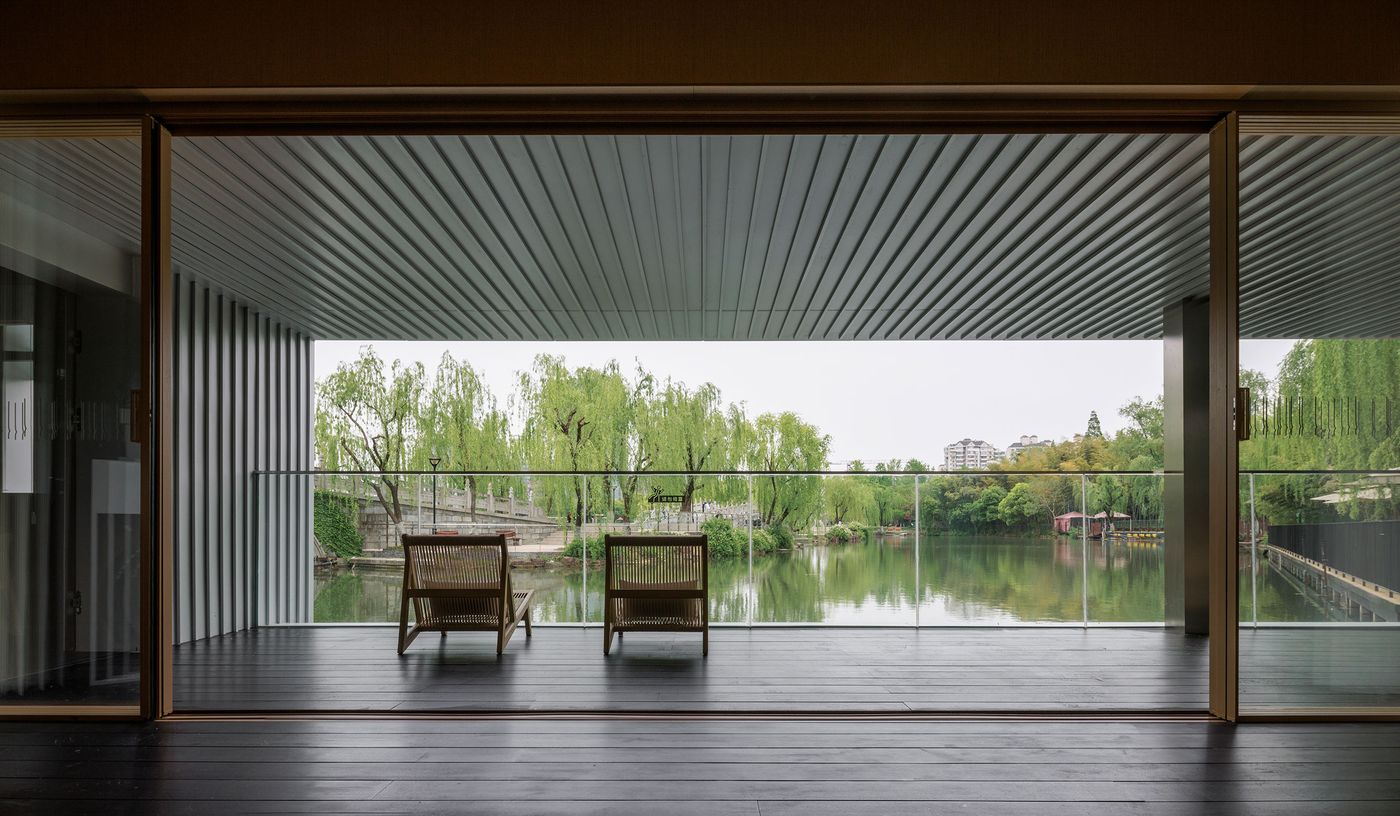
Photography by Liu Guowei.
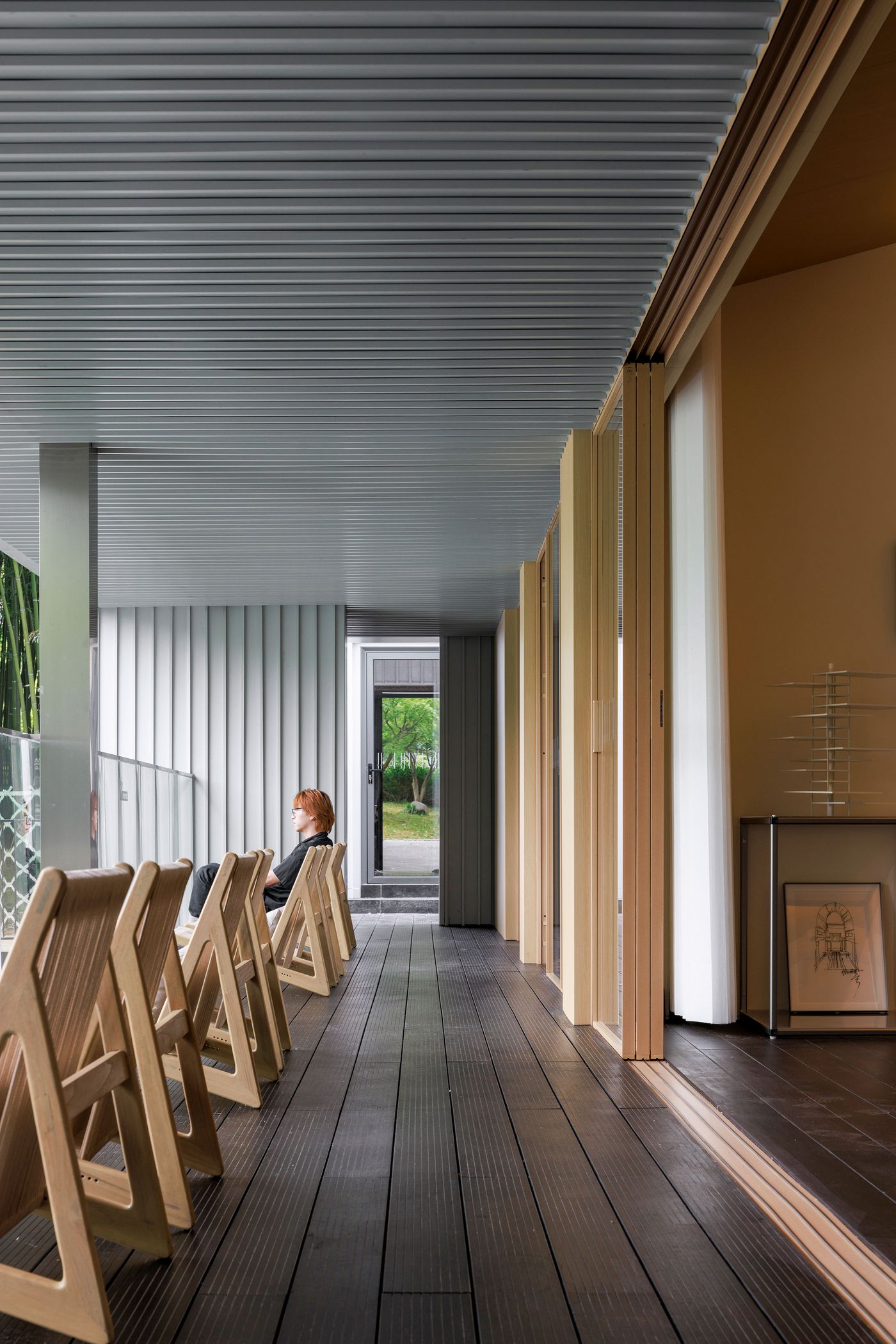
Photography by Liu Guowei.
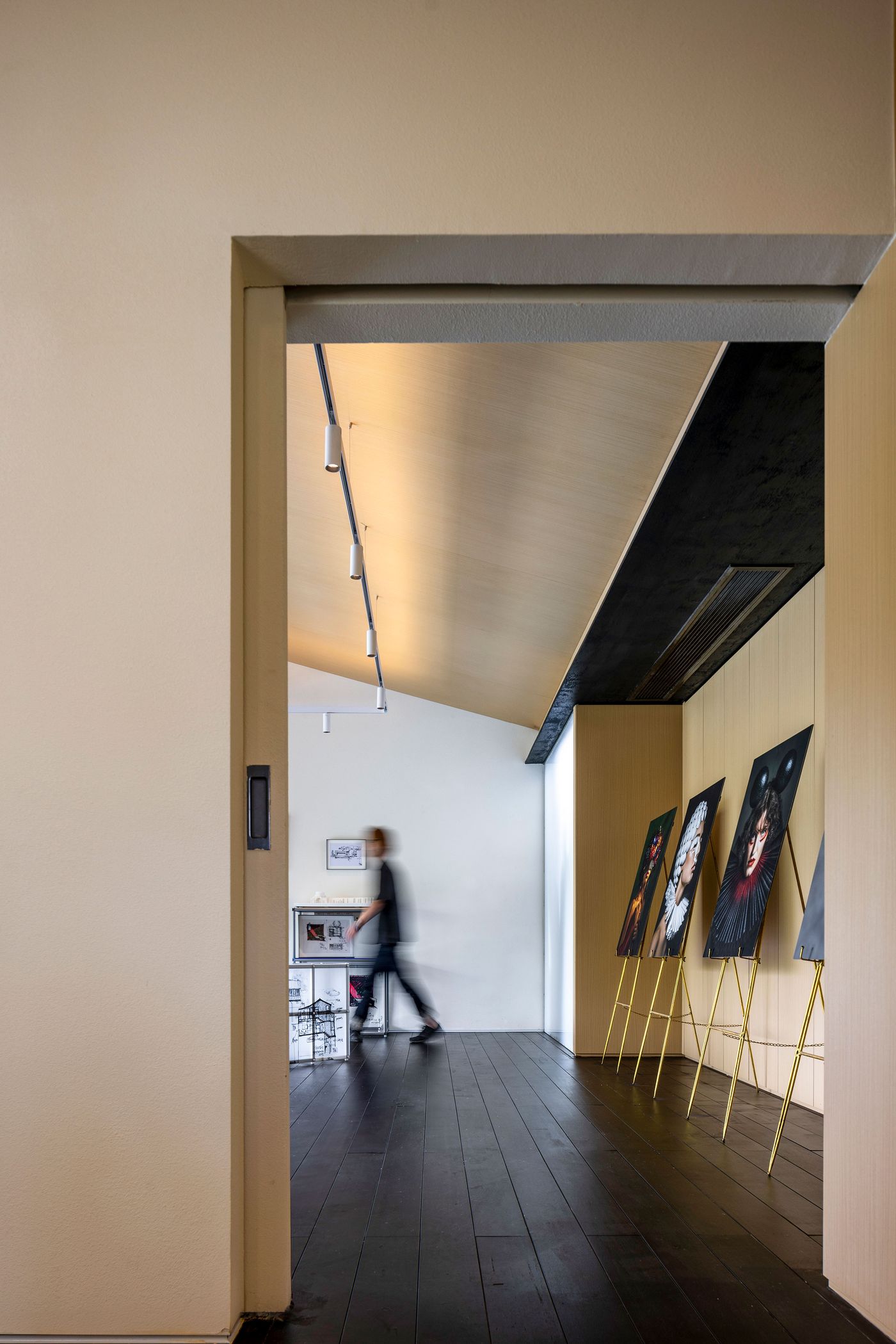
Photography by Liu Guowei.
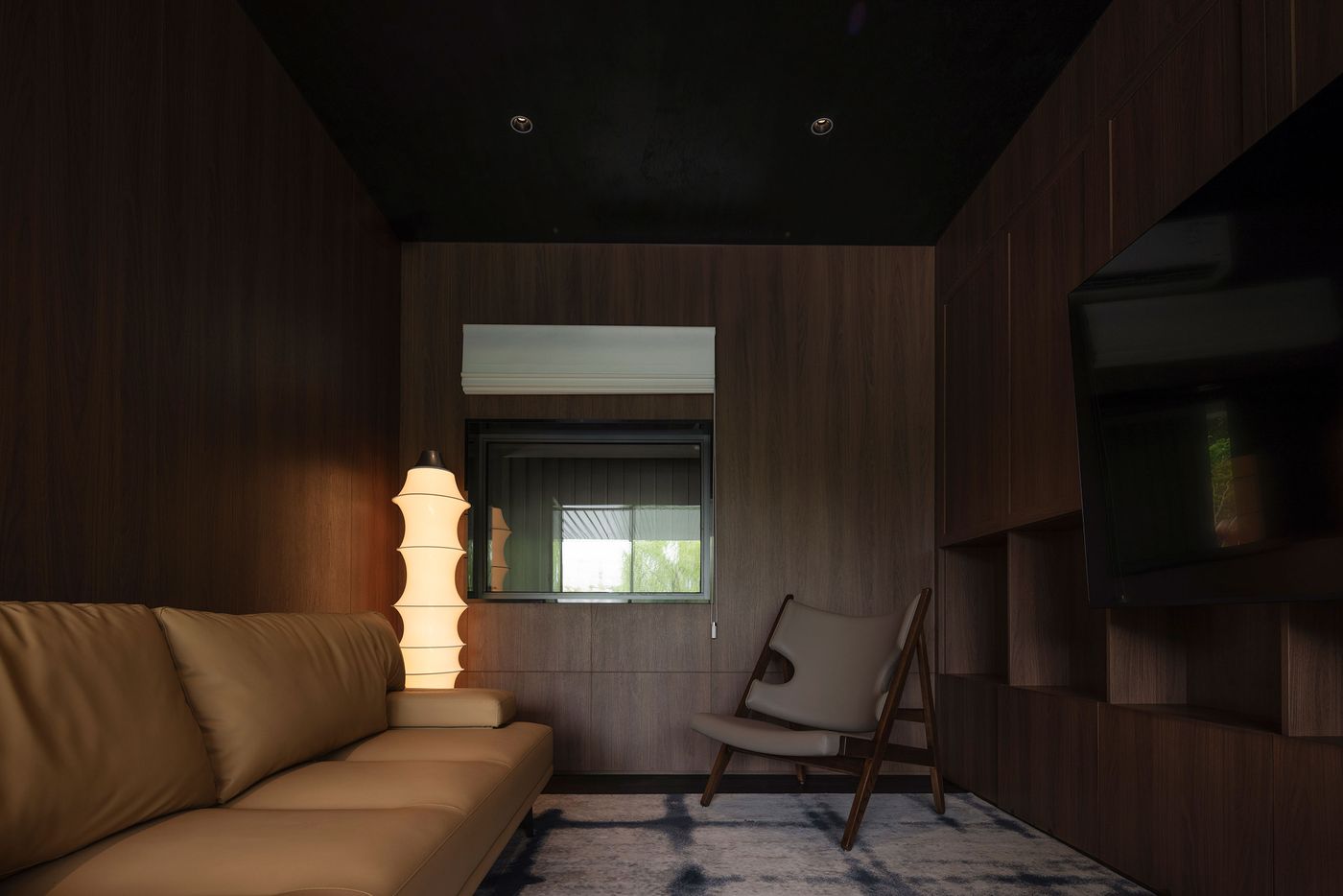
Photography by Liu Guowei.
Inside, the material palette shifts in tone but not in spirit. The public area in the main volume features hardwood floors and light-toned wood panelling, its daylight-infused atmosphere ideal for a quiet gathering or exhibition, while the two private rooms are more intimate with dark-toned wood, soft rugs, and low lighting evoking a space for reflection or repose. In contrast, the café is airy and whimsical, with blue-painted wood veneer cabinetry and decorative tilework imbuing it with a sense of casual delight.
A paradigm of poetic restraint, the project’s power lies not in its scale or innovation, but in its ability to pause time. In a city that rarely sleeps, Wutopia Lab has crafted a spatial haiku: concise, resonant, and quietly unforgettable.
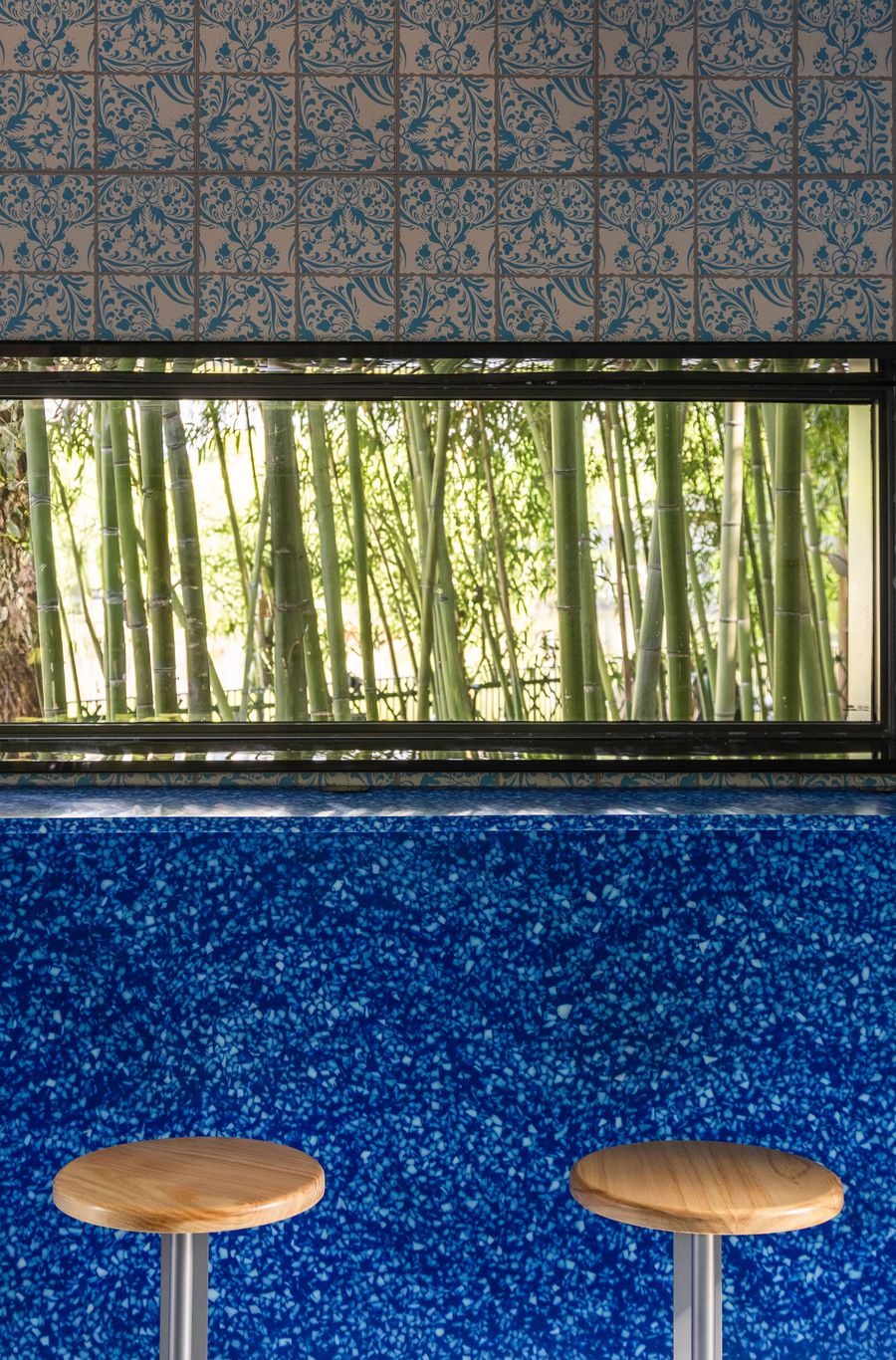
Photography by Liu Guowei.
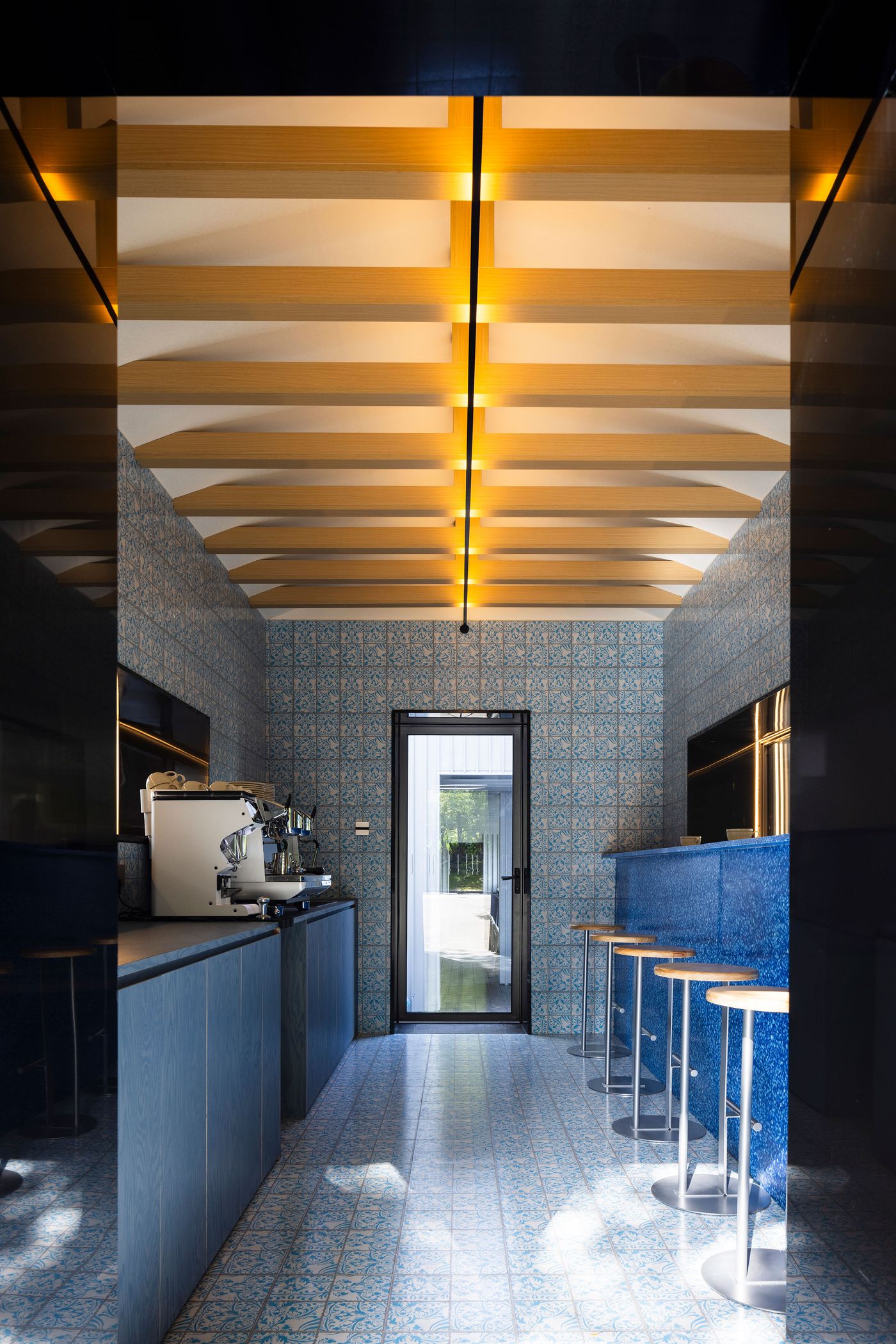
Photography by Liu Guowei.
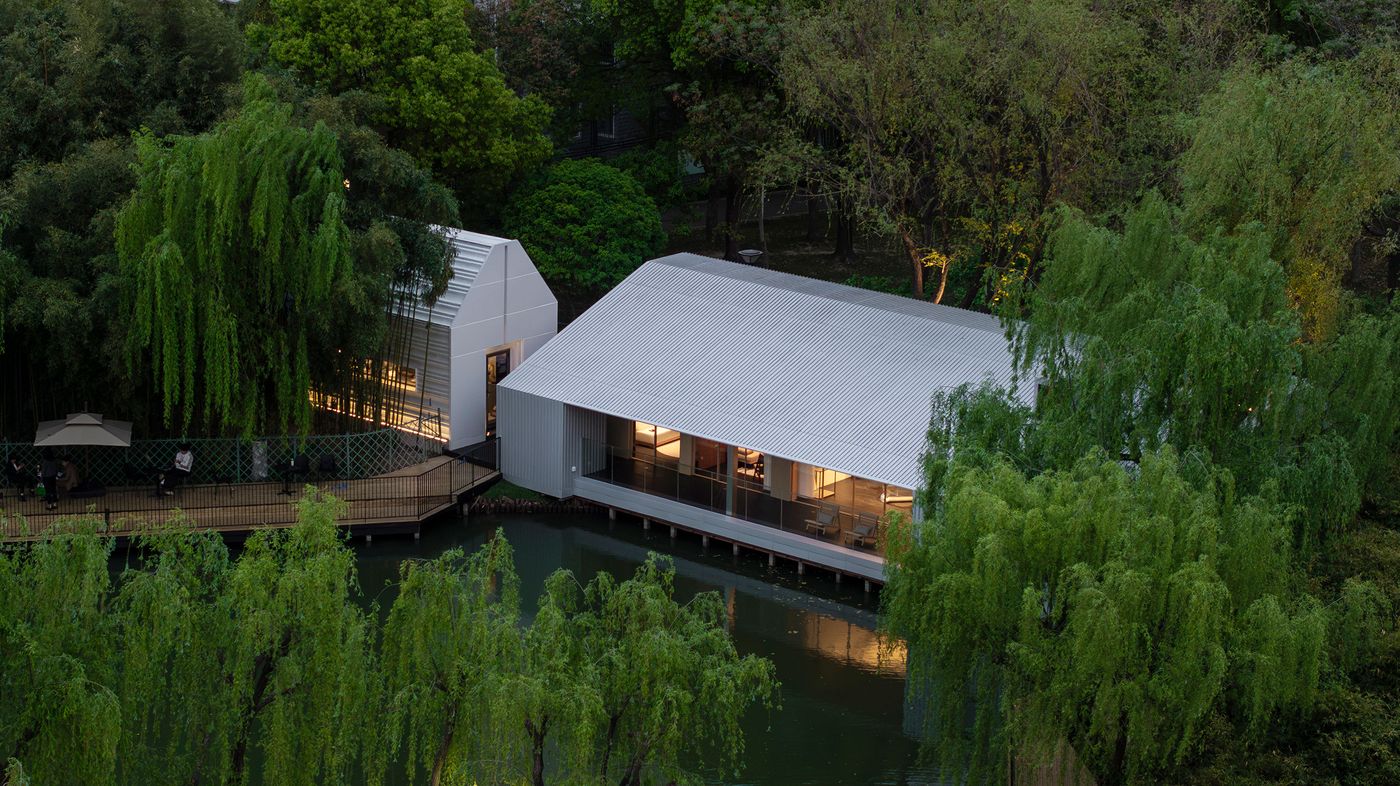
Photography by Liu Guowei.
As Yu puts it, “Architecture exists to capture that moment of beauty”, and The Lake House does just that.
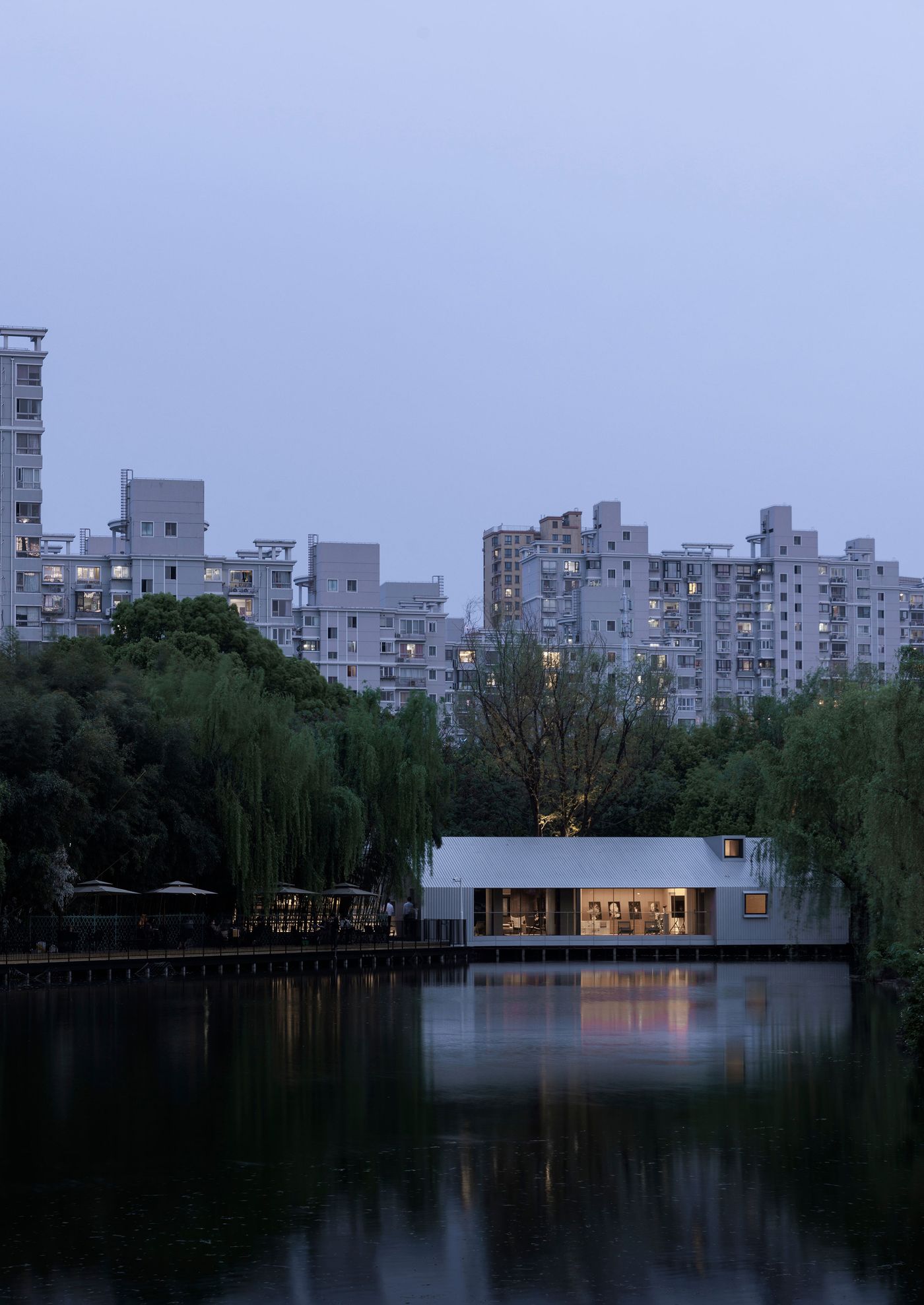
Photography by Liu Guowei.
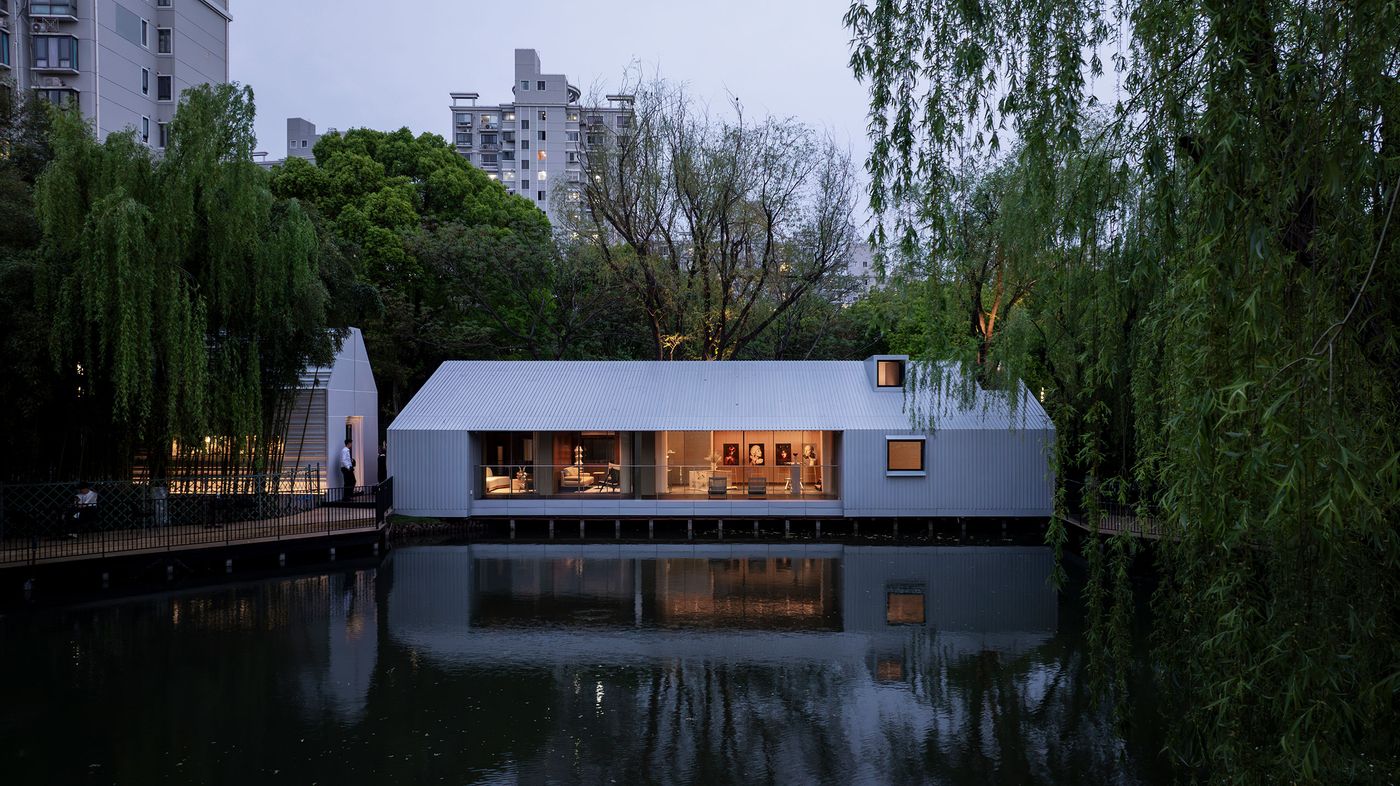
Photography by Liu Guowei.
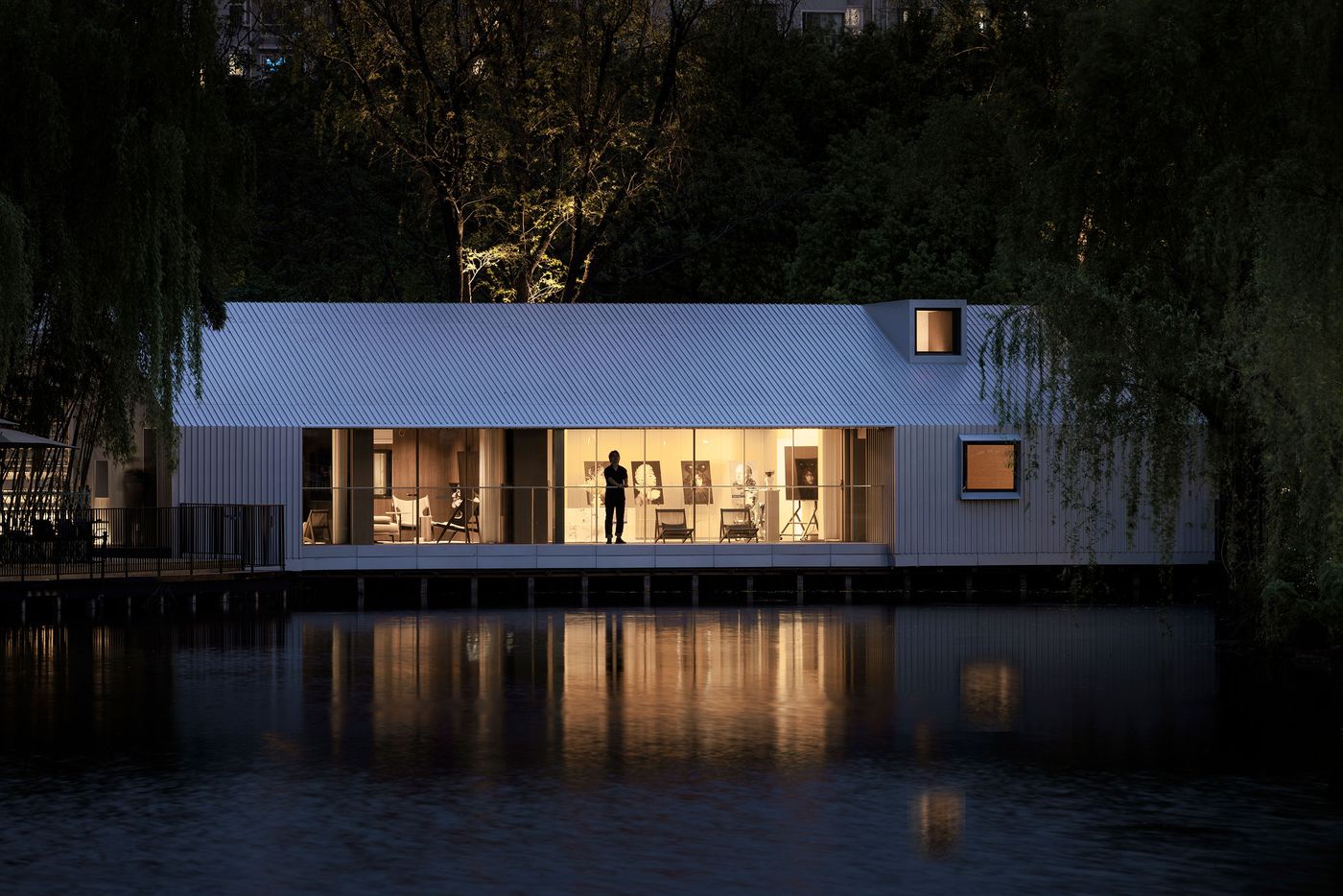
Photography by Liu Guowei.
